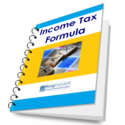This article defines what Reverse Mortgage is, explains how it works and discusses various aspects of Reverse Mortgage. It also talks about its advantages and disadvantages, and discusses if it is right for you.
The article also has details about the reverse mortgage products offered by Punjab National Bank (PNB), Indian Bank, State Bank of India (SBI) and Corporation Bank.
| The most important thing for people planning their retirement is to get a steady stream of cash to substitute the salary – something that would cease to come post-retirement. For people not getting a pension, this is an even bigger worry. |
The most preferred investment avenues to earn this steady income have been low-risk, fixed income instruments like Bank Fixed Deposit (FD), Senior Citizen Savings Scheme (SCSS), Post Office Monthly Income Scheme (PO MIS), etc.
For all these, you need to make a large upfront deposit to earn the monthly income. What if you don’t have this huge amount of cash?
Over your working life, you would have accumulated various assets – like house, gold, etc. One option is to sell some of these assets, and invest the amount thus obtained in the fixed income instruments.
But if you sell these assets, you can no longer use them. For example, if you sell your house, you would have to live in a rented house. This means that you don’t just have to live in a new place, but you also increase your monthly expense due to the rent. You would have to earn that much more interest every month in your retirement!
Is there any way you can utilize your assets while still owning and using them?
Yes, you can. Reverse Mortgage is the answer.
(Download a spreadsheet containing a detailed comparison of reverse mortgage products offered by Punjab National Bank (PNB), Indian Bank, State Bank of India (SBI) and Corporation Bank)
(You need to be logged-in to download the spreadsheet. For free registration that takes less than a minute, please click here. To know the benefits of registration, please click here.)
What is Reverse Mortgage?
Although introduced in India only in 2007, Reverse mortgage is very popular all over the world. And the reason is very simple: It converts an illiquid asset like a house into a liquid, monthly cash flow that is so important for retired people.
We have heard of mortgage, or a home loan. You buy a house, for which the bank lends you around 85% of the cost. That is, you take an upfront loan, and the amount is quite high. You mortgage the house to the bank.
You pay your EMIs, and repay the loan with interest. When the housing loan is fully repaid, the bank releases the mortgage, and the house is fully yours. If you fail to repay the home loan, the bank can sell the house and recover its money.
Reverse mortgage is like a mirror image of this.
How Does Reverse Mortgage Work
In a normal mortgage or a home loan, you get an upfront loan, and pay back in installments (EMIs).
In a reverse mortgage, the bank gives you monthly installments (similar to the EMI for a home loan), for a fixed period of time (usually 15 years).
Thus, instead of getting a lump-sum and paying it back, you get steady EMIs from the bank. This payment continues till the end of the reverse mortgage period.
At the end of this period, you should ideally pay the bank a lump-sum amount that is agreed upon in the reverse mortgage contract, right?
No – and this is the best part – you don’t have to worry about the final repayment of the large lump-sum amount.
Sounds too good to be true? Here’s how it works.
You need to pledge your existing house (which should have no loan liability against it, by the way) to the bank. After the death of the person taking the reverse mortgage, the bank can sell the house and get back its money.
But the bank can’t sell the house till you and your spouse are alive, and are living in the house. This means that you and your spouse can live in the house even after the reverse mortgage period is over.
The bank can sell the house only after the death of the person taking the reverse mortgage, and his / her spouse.
Bottom line: You not only get a monthly cash flow for several years, but also get to live in your own house till you are alive. Your spouse can also stay in the house worry free.
Only after the death of the person taking the reverse mortgage, the bank can sell the house.
If the sale value of the house is more than the amount due to the bank, the excess amount is given back to your legal heirs.
If the sale value of the house is less than the amount due to the bank, the difference is borne by the bank – your legal heirs do not have to pay any shortfall. The bank bears this risk.
If your legal heirs want to retain the house, they can pay back the amount owed to the bank by you, and get the house.
Factors Affecting the Reverse Mortgage Amount
Since reverse mortgage is very similar to a home loan, the factors affecting a home loan also affect reverse mortgage. How much can you get through reverse mortgage depends on the following:
Loan to Value Ratio (LTV Ratio): This is the lump-sum amount that is sanctioned for the reverse mortgage as a fraction of the value of the house. (This is also the amount that the bank needs to recover after the reverse mortgage holder expires).
For example, if the value of the house is Rs. 40 Lakhs, and the loan to value ratio is 70%, you would get a reverse mortgage for Rs. 28 Lakhs. But if this ratio is 90%, you would get it for Rs. 36 Lakhs.
Remember, the higher the reverse mortgage value, the more is the monthly payout to you. Therefore, a high loan to value ratio is better for you.
Interest Rate: This is the rate at which you get the reverse mortgage. Obviously, the lower the interest rate, the better for you.
Tenure: This is the number of years for which you would get a monthly payout through the reverse mortgage. Usually, the lower the tenure, the higher is the monthly sum given to you.
But you need to understand that there is a tradeoff here: If you reduce the tenure to get more money every month, you would get the steady cash flow for a shorter period.
Alternatively, if you want the steady cash flow for a longer period, you would get a lesser amount every month.
Therefore, evaluate your current and future needs properly before deciding on this.
Age of the House Owner: This is important, because as we have seen earlier, the bank bears the risk of fluctuation in the market value of the home.
The longer the time between reverse mortgage contract and selling the house, the more can be the fluctuation in the market value of the house. And therefore, the more is the risk for the bank.
Therefore, the monthly payout also depends on the age of the person entering the reverse mortgage contract. (Remember, the bank can sell the house only when this person and his / her spouse die).
As a general rule, the monthly payout is more for an older person entering a reverse mortgage contract compared to that for a younger person.
Example
Let’s consider an example. We would use the data from Punjab National Bank (PNB) that you can find below.
Suppose, you have a house with a market value of Rs. 40 Lakhs. With a loan to value ratio of 80%, you are eligible for a reverse mortgage of Rs. 32 Lakhs.
If you go in for a tenure of 10 years, you would get around Rs. 490 * 32 = Rs. 15,680 per month for 10 years.
If you go in for a tenure of 15 years, you would get around Rs. 240 * 32 = Rs. 7,680 per month for 15 years.
If you go in for a tenure of 20 years, you would get around Rs. 135 * 32 = Rs. 4,320 per month for 20 years.
(The exact payment would depend on your age at the time of entering into the reverse mortgage contract)
(Download a spreadsheet containing a detailed comparison of reverse mortgage products offered by Punjab National Bank (PNB), Indian Bank, State Bank of India (SBI) and Corporation Bank)
(You need to be logged-in to download the spreadsheet. For free registration that takes less than a minute, please click here. To know the benefits of registration, please click here.)
(Continue to Page 2 to read about advantages & disadvantages of reverse mortgage, and details of the products offered by various banks in India)
Other articles you might be interested in:
- Home Loan / Mortgage Insurance – What to Buy, How to Buy
- Change in interest rate: Impact on floating rate home loan, EMI and tenure
- All you wanted to know about Senior Citizen Savings Scheme (SCSS)
- When “at-par” is not so good: New Fund Offer (NFO) versus existing MF schemes
- Not Cash, Not Travellers Cheques: Use Travel Card
- Once again, banks hike interest rates for deposits and lending (loans)
- SEBI approves Application Supported by Blocked Amount (ASBA) for IPOs
- Missed the income tax return (ITR) filing deadline of 31st July?
- How to fill Income Tax Return Form 2 (ITR2) Instructions
- Set Off and Carry Forward of Losses – Capital Gains and House Property
- How to save / avoid Long Term Capital Gain (LTCG) Tax on Sale of a House
- Long Term Capital Gains (LTCG) on Sale of a House – Calculation and Income Tax
| Advantages of Reverse Mortgage No Additional Trouble: If you rent out your house to earn an income, you would have to live in another house. This means added effort for finding a tenant every year, and finding a rental house for you every year. |
If you go in for a reverse mortgage, you stay in your own house for life!
No Compromise in Standard of Living: If you adopt the above strategy of renting your house, in all probability, you would stay in a smaller house or in a far off place to save on rent. This means you compromise your standard of living.
If you go in for a reverse mortgage, you stay in your own house – where you have been living – for life.
No Income Tax: The money you get every month from the bank is tax-free. Yes, there is no income tax to be paid on this! The amount you receive from reverse mortgage is not taxable. This is a big relief for senior citizens!
Disadvantages
The only disadvantage of a reverse mortgage is that you can’t give your house to your kids or heirs, as the bank retains the right to sell it to recover its money.
But again, if your legal heirs want it, they can always pay the owed amount to the bank, and retain the house!
Is Reverse Mortgage for You?
Reverse mortgage is specifically designed for senior citizens to help them in their retirement. There are age restrictions on reverse mortgage. Thus, not everyone can go in for it.
Reverse mortgage is right for you if:
- You are over the stipulated age limit for reverse mortgage
- You own a house
- There is no pending loan liability for it (that is, you have paid the entire home loan, and you haven’t taken any “loan against property” for that house)
- You do not have a lump sum to invest and earn a monthly interest
- You do not earn a pension or the pension is not sufficient to cover your expenses
Reverse Mortgage in India
The budget presented in 2007 gave a green signal for introducing reverse mortgage products in India. Since then, many banks have started offering this product.
(Download a spreadsheet containing a detailed comparison of reverse mortgage products offered by Punjab National Bank (PNB), Indian Bank, State Bank of India (SBI) and Corporation Bank)
(You need to be logged-in to download the spreadsheet. For free registration that takes less than a minute, please click here. To know the benefits of registration, please click here.)
The eligibility criteria is more or less the same across the banks: The person has to be the owner of the house / flat, has to be living in the house, and should have bought the house on his / her own (hereditary property is not considered). The person also has to be a resident of India.
Punjan National Bank (PNB) was the first public sector bank (PSB) to offer a reverse mortgage product in India. PNB offers it under the brand “PNB Baghban“.
The minimum age at the start of the contract is 60 years. The Loan to Value ratio is 80%.
The rate of interest applicable is 10% per year (fixed rate), and is subject to reset every five years. The loan is given for 10 to 20 years.
You get between Rs. 490 and Rs. 135 per month per Lakh of the reverse mortgage amount, depending on the tenure.
Indian Bank calls its reverse mortgage product “Reverse Mortgage for Senior Citizens“.
The minimum age at the start of the contract is 60 years.
The rate of interest applicable is 10% per year (fixed rate), and is subject to reset every five years. The loan is given for 15 years.
You get Rs. 555 per month per Lakh of the reverse mortgage amount, depending on the tenure.
State Bank of India (SBI) calls its product “SBI Reverse Mortgage Loan (RML)“.
The minimum age at the start of the contract is 60 years. The Loan to Value ratio is 90%.
The rate of interest applicable is 10.75% per year (fixed rate), and is subject to reset every five years. The loan is given for 10 to 15 years.
You get Rs. 468 or Rs. 225 per month per Lakh of the reverse mortgage amount, depending on the tenure.
Corporation Bank offers its reverse mortgage product under the brand “Corp Shelter Loan Scheme“.
The minimum age at the start of the contract is 55 years for the younger spouse. The Loan to Value ratio is between 45% and 70%.
The rate of interest applicable is 10.5% per year (fixed rate), and is subject to reset every five years. The loan is given for 5 to 15 years.
You get between Rs. 1263 and Rs. 228 per month per Lakh of the reverse mortgage amount, depending on the tenure.
Other companies offering Reverse Mortgage in India are LIC Housing Finance, Bank of Baroda – BoB (Baroda Ashray Reverse Mortgage Loan) and Vijaya Bank (V-Reverse Mortgage Loan Scheme), among others.
(Download a spreadsheet containing a detailed comparison of reverse mortgage products offered by Punjab National Bank (PNB), Indian Bank, State Bank of India (SBI) and Corporation Bank)
(You need to be logged-in to download the spreadsheet. For free registration that takes less than a minute, please click here. To know the benefits of registration, please click here.)
Other articles you might be interested in:
- Home Loan / Mortgage Insurance – What to Buy, How to Buy
- Change in interest rate: Impact on floating rate home loan, EMI and tenure
- All you wanted to know about Senior Citizen Savings Scheme (SCSS)
- When “at-par” is not so good: New Fund Offer (NFO) versus existing MF schemes
- Not Cash, Not Travellers Cheques: Use Travel Card
- Once again, banks hike interest rates for deposits and lending (loans)
- SEBI approves Application Supported by Blocked Amount (ASBA) for IPOs
- Missed the income tax return (ITR) filing deadline of 31st July?
- How to fill Income Tax Return Form 2 (ITR2) Instructions
- Set Off and Carry Forward of Losses – Capital Gains and House Property
- How to save / avoid Long Term Capital Gain (LTCG) Tax on Sale of a House
- Long Term Capital Gains (LTCG) on Sale of a House – Calculation and Income Tax





